TMW #145 | An apology for omnichannel
Welcome to The Martech Weekly, where every week I review some of the most interesting ideas, research, and latest news. I look to where the industry is going and what you should be paying attention to.
👋 Get TMW every Sunday
TMW is the fastest and easiest way to stay ahead of the Martech industry. Sign up to get the full version delivered every Sunday for this and every TMW, along with an invite to the TMW community. Learn more here.
An apology for omnichannel
I am here to apologize. Well kinda. You see, I’ve always had this gripe with the word “omnichannel.” Over the years, I’d post stuff like the one below to make fun of the concept.

My view of omnichannel up until this year was that it is simply a made-up word that sounded cool, and was created specifically to sell software and consulting hours. It’s a blatant hijacking of the concepts I learned in college. “Omni” is Latin for “every” or “all,” and it was used as a prefix for words like omnidirectional (all directions), omnivore (you eat plants and animals), and more serious words like omnipotent, omnipresent, omniscient – words historically that have been reserved for the god of various religions. I found it absurd that we’d use this concept to describe a marketing strategy or technology product.
Well… after reviewing Tim Mason’s and Sarah Jarvis’ 2nd edition Omnichannel Retail – How to Build Winning Stores in a Digital World, I think I’ve changed my mind.
Here’s my review of the book in full:
"The whole idea of Omnichannel has never sat right with me. Pushed by tech vendors and consultants, the concept of Omnichannel has contorted into a confusing buzzword that creates unrealistic expectations for marketing leaders. Yet, the second edition of Omnichannel Retail gives us a fresh, and perhaps better approach to the concept. This revised edition could not come at a better time for retail leaders as brands have to respond to out-of-control cost of living challenges, a post-Covid-19 world and increased digital expectations from consumers. In Omnichannel Retail, Tim Mason and Sarah Jarvis have delivered a vision for what this confounding word should represent that I can finally get behind."
At a recent conference earlier this year, I watched Mayur Purandar, VP of enterprise architecture at Lowe’s, explain his philosophy of omnichannel as a business manifesto, detailing how a brand can and should support the various ways in which a consumer interacts with them in a manner that’s consistent and provides an excellent experience.
So when it comes to omnichannel maybe I’m the problem? Hi, it’s me. I’m the problem.
Can this concept be *gasp* more than a corporate buzzword to win business cases and close software contracts?
Let’s find out.
What is omnichannel about?
Omnichannel represents the desire of people working in marketing in big brands to make the experience of a customer seamless, without friction, and highly personalized. Omnichannel is like a corollary to personalization in that brands want to anticipate customer needs and provide information, experiences, and content in order to satisfy those needs.
And even though the literal reading of the word is “all channels,” the real meaning is far from it. Should each channel have a unifying strategy? Yes. Should each channel talk about the same things? No. Should companies literally use every single channel at their disposal? Hell no.
But here’s where it gets interesting. What marketers are used to is a very linear concept of business growth. As represented by the classic paradigm funnel, each channel does a specific job: raise awareness, convert customers, take care of them after purchase, and increase their loyalty and retention.
We’ve all seen it before:
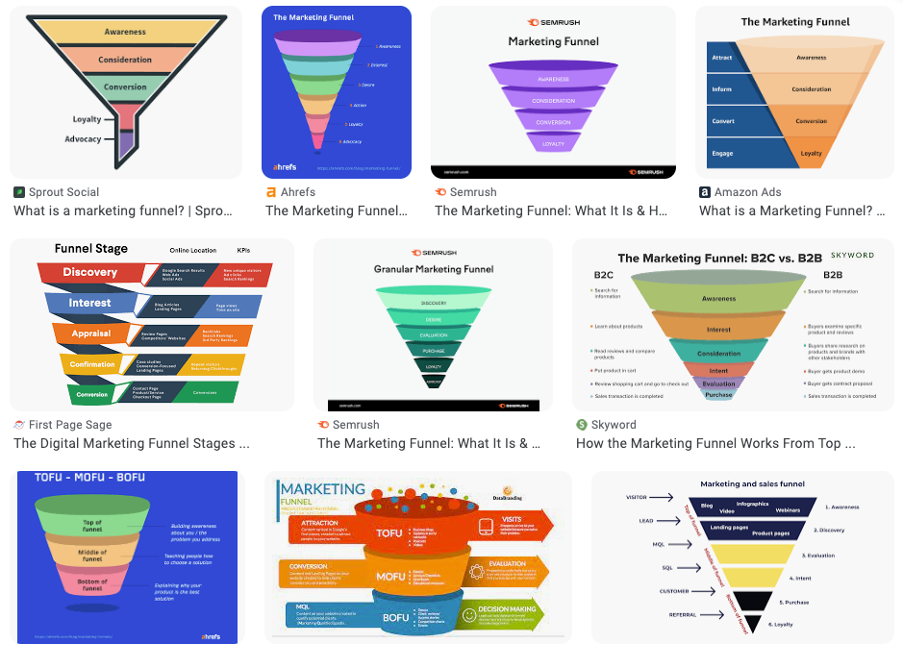
But omnichannel is another view on that concept, understanding that the customer’s experience is not a single direction but is omnidirectional. The funnel is but one part of an overall experience, across channels and interactions, and online and in-person experiences there are a wide variety of touchpoints. The better way to understand the flow of customers in and around a brand is what I’m calling the Omnicircles:
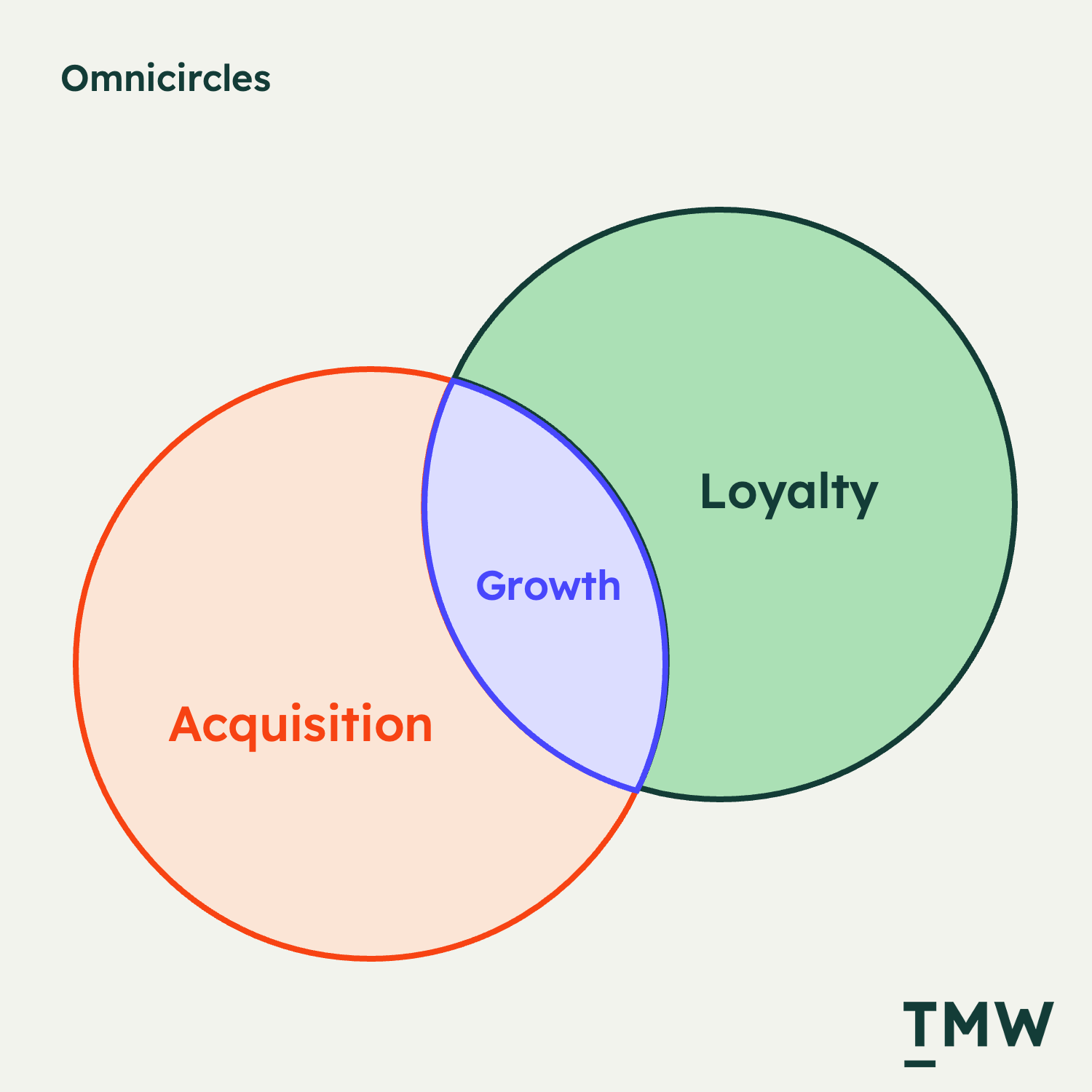
The activities across both circles can look the same some of the time, but a company must effectively execute things like paid advertising, conversion-focused activities, content marketing, and email automations like cart abandonments, with more loyalty-focused strategies like winning customers back, and keeping them happy and engaged. It’s a balancing act. Over-indexed in one circle, the other suffers. In the middle is the opportunity to create exponential growth.
Not to mention that both online and offline channels, stores, pop-ups, third-party marketplaces, apps, and websites need to be aligned to both acquisition and loyalty.
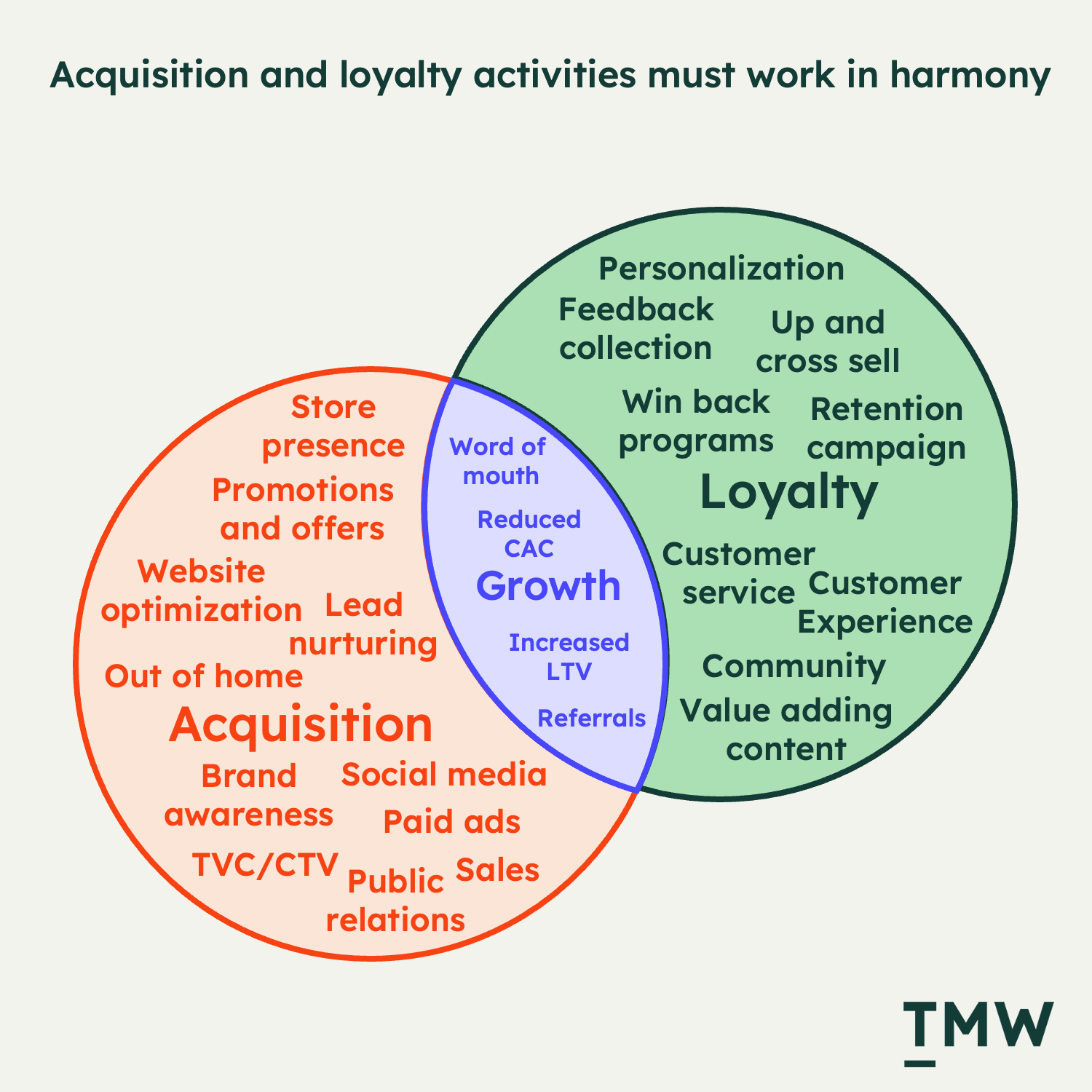
Loyalty is a powerful acquisition machine. When done well, it should lower your cost of acquisition because the lifetime value of each customer should go up if a brand can service them well and deliver a differentiated experience. It also leads to brand-building goodness like strong word of mouth, referrals, and high-quality reviews – the invisible force that’s pushing customers into stores every single second.
At a very basic level, omnichannel is about harmonizing both business strategies. Loyal customers are the basis for who we should be targeting with paid media campaigns. The purchasing habits and online behaviors of high-value customers tell us how to design our shopfronts, apps, and online stores, along with what content we should be writing and focusing on. Loyal, happy, buying customers are the compass of a growing brand. Conversely, there is no loyalty without strong acquisition; finding the right customers and continuing to grow the brand’s size of the pie reinforces customer loyalty.
Of course, this all seems far too easy with just words on a page. Hidden within these two circles, for most brands, is a complicated maze of political battles, incentives, hierarchies, KPIs, OKRs, responsibilities, and pet projects that make any kind of unity incredibly difficult. Omnichannel is harmony; it’s a unified force in a business to serve a customer.
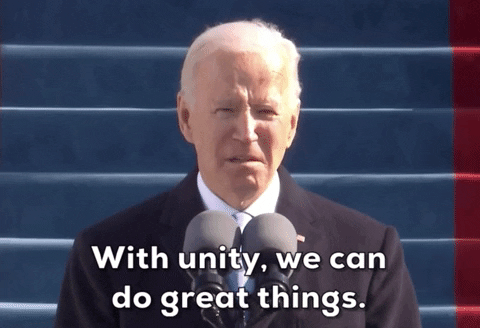
Omnichannel, obviously, isn’t really about doing stuff in a bunch of different channels. It’s about making them all contribute to business and customer goals. How does it do that?
The new promise land
The real question we must ask to omnichannel strategies is whether it is good for business. To do it well, you have to expend a huge amount of strategic, political, and technical energy, and often, you need to ask the executive team for millions of dollars to make it happen. What’s the payoff?
To answer that question, we must look at the companies that invest into omnichannel strategies. The locus of omnichannel is reserved for businesses that have a lot of things or people in transit. That’s retail or the travel industry. Retail is especially impacted because there is so much stuff in transit – customers moving through websites, emails and messages sent to customers, packages in various stages of delivery and return, and transactions. Retail suffers the most from experience discombobulation because there are just so many states in which a customer is in.
Similarly. in the travel industry, there are a lot of touchpoints. Even in my own strategy work, the airline industry can have a dizzying number of interactions with customers just on the operational side, not to mention the promotional aspect of the business.
And so, what are the results from doing omnichannel?
According to McKinsey, personalizing the customer experience in retail can deliver up to a 1 to 2 percent lift in total sales for grocery, and even higher for fashion and other types of retail. Interestingly, they also found that marketing and sales costs decrease by 10 to 20% for brands that have a personalization program in place. A lot of omnichannel is built on top of a strong personalization strategy.
My go-to chart when thinking about omnichannel was Target’s statistics over COVID-19. With the rise of online commerce, a change was happening with not just e-commerce preferences, but the combination of online and offline channels used for browsing and transacting. The discovery that customers who transact online spend 10 times more when in-store is also in the mix.
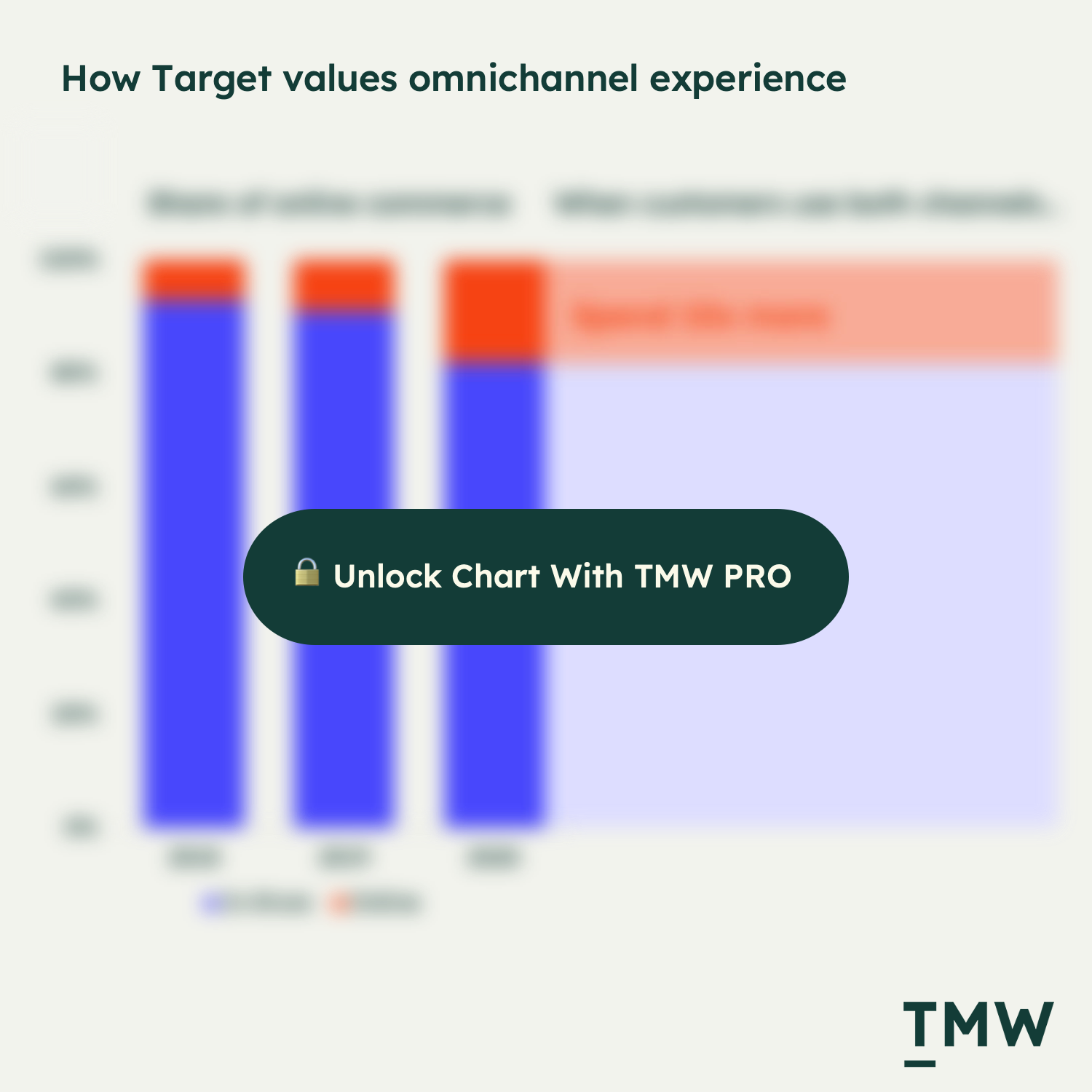
But if you ask customers if they care about getting personalized omnichannel experiences, according to the 2023 Grocery Tech Trends Survey from Risnews, they don’t. But they do love a sneaky discount code.
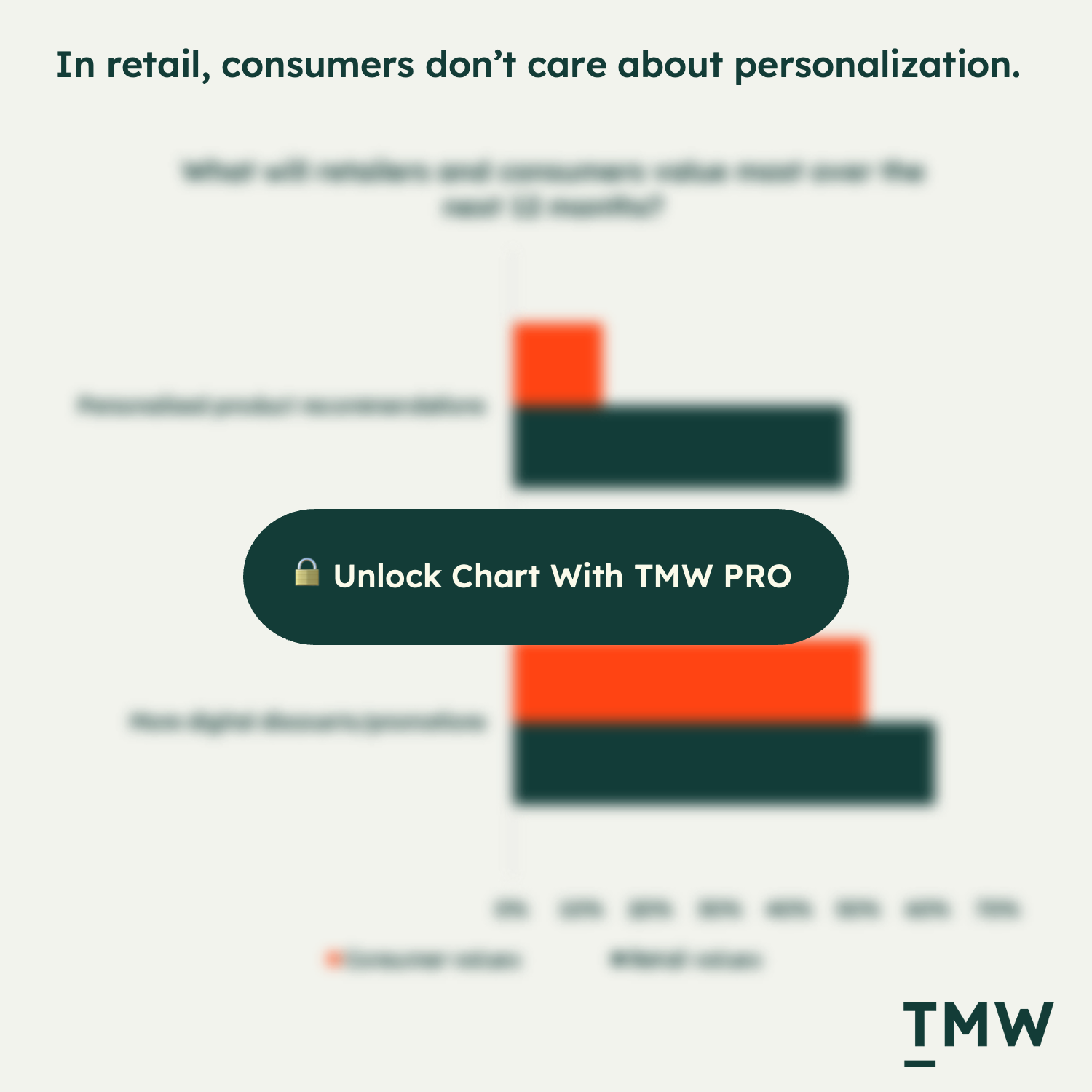
So the results are mixed. Here’s my rationale:
The costs of not doing omnichannel means you can’t compete with big tech that definitely do omnichannel and are providing world-class experiences. The increased costs for not improving the customer experience in an age where Amazon continues to cannibalize retail, even offering up their own physical stores to collect more consumer behavior data, Uber is now delivering groceries, and Instacart IPO’d to $9.9 billion in valuation off the coat tails for consumer preference for online grocery shopping means that legacy retailers need to catch up. There’s no going around this one.
Look at Walmart, the company that’s transforming internally into a tech company. People want streamlined experiences and will remember brands that deliver them. On the other hand, they will also remember when you screw up a delivery or make it excruciating to resolve something with customer service. Even worse, when they can only buy a product “in-store” when browsing online.
Retail companies are sitting in a very unique period in history, and it’s their time to seize it, or roll over and die and let a new generation of merchants take the spoils in a new world.
From the book, Omnichannel Retail:
“The internet is undeniably the biggest and most relevant recent change in retail because of its impact on the way businesses engage with and serve customers. Where the average business traditionally operated a single, physical sales channel – the store – many now support multiple digital and physical sales and marketing channels, through the store and ecommerce websites and marketplaces to social media networks and traditional advertising media, including print, television and radio. Today a business offering a blended physical and digital retail presence that can seamlessly adapt its offerings and services consistently across all channels would be named ‘omnichannel.”
In reality, people who lead omnichannel programs in their business are coming from a place of empathy for the customer – try contacting the airline when a flight is canceled, or when your bank account is hacked, and it’s a make-or-break moment with a brand. Martech folks have a desire to differentiate their brand through experience.
Nice helpful touches such as Nike’s utilization of their app to scan products in-store to find their price and details, or to go beyond click and collect to allowing customers to reserve a variety of shoes online to then go in-store to try them on, should be worthy of our praise because it takes a huge, miraculous amount of technical skill and tasteful design choices to make that happen.
Avoiding omnishambles
One of the reasons why the concept is so riddled with confusion is that very few brands can actually pull it off. What people (particularly in enterprise contexts) are usually referring to with omnichannel is making their email work with their website. And yes, that’s a challenge for most teams, but it’s a very low bar.
But beyond that, omnichannel should really be about an omniscient business; a company that sees everything going on with their customers. Things break down in a customer journey because the journey reflects the dysfunction, asymmetry, and lack of alignment in teams. If the mobile team has no idea what the CRM team is doing, or what kinds of targeting and campaigns the paid media team is pursuing, then of course that’s going to reflect badly on the customer experience.
The unsolved problem in omnichannel is that while political tribalism in enterprise businesses makes it hard to coordinate experiences, the identity factor makes it almost impossible. One answer to a recent question I posted on LinkedIn from John James highlights this point well:
“Talking about adding more distribution channels is a good discussion. Adding more marketing comms channels can be a good discussion, but also stretches teams and expertise significantly - so it's high risk. Those who use the term as a buzzword though...well let's say it goes nowhere constructive. I don't know anyone who knows what they are talking about in the industry who use the word. I do know a lot of management consulting firms who have entire packages based on this word and their other favorite play-thing 'digital transformation'.”
Most companies have different systems that talk to customers in varying ways. Salesforce might be your B2B prospecting tool for sales agents, but all the email marketing is going out of Marketo. Your e-commerce or operational ERP might be doing something that doesn’t match what is being sent out to customers. Each Martech tool has its own schema; its own methodology and identifiers. That’s why CDPs love to rave about omnichannel – it’s a single concept that represents the problem well: to unify experiences you need to unify data. Blah blah blah. We’ve heard that. Next.
Avoiding omnichannel from devolving into omnishambles really comes down to having excellent leadership. Every large corporation is a political beast, with people jockeying for deals and budgets to fund things using buzzwords a nice-looking PowerPoint slides.
Real leadership in Martech looks at the opportunity of omnichannel and the downsides of not pursuing it, and they create a vision and a path for people to unite. Only company leadership can do the work of uniting people under a common cause. If you’re trying to push an omnichannel agenda in your company and leadership isn’t biting, it’s time to move on to something else… maybe a different company.
God complex
The other, perhaps more pernicious side of omnichannel is the expectation that brands really should become “all-seeing and all-knowing.” The idea pioneered by omnichannel is that it is virtuous and right that a company should know a lot of things about you and personalize every surface area to better serve you. In a way, it reminds me of Google, the true omni-company that answers all of your questions and personalizes ads, products, and emails for you. What’s the difference between praying to a god or asking Google for something? You might need to answer that one for yourself.
This should be concerning; shouldn’t omnichannel be about the right channel and right message? Not collecting vast amounts of data to anticipate our every need? Well, in pursuing that strategy, you need to also believe both that 1) companies should play an omniscient and omnipotent role in customers’ lives, and 2) that brands should be the custodians of the data needed to make that a reality.
Taken to the extreme, companies like Amazon “the everything shop” can play an oversized role in our lives. And in doing so, controlling the flow of attention and capital in their direction. This is the true power of omnichannel – customer preference by eliminating friction, hassle, and optimizing comfort. And they’ve become so good at it that companies like Meta, Google, and Amazon can often know more about you than you know about yourself.
There’s something to be said about what you’re optimizing for. If you’re a middle-sized e-commerce retailer, then you’re just trying to improve the customer experience; but if you’re a major brand, the reality is that you do have an influence in the lives of customers, and so, omnichannel is a huge responsibility and not just a way to make more money or reduce customer churn.
As companies become more powerful and capable, it’s not unlikely to see mega brands encroach into more areas of our lives to influence more of our waking attention so we can watch ads or buy products. Which brings me to my conclusion that the omnichannel philosophy is about power. In other words, Amazon has a God complex and needs therapy.
Better words, better worlds
Ludwig Wittgenstein (one of my personal heroes) once said that “your words are your world,” and in the case of omnichannel, we literally invented a word to represent a concept that is so new and novel that I can’t blame it for taking off the way it did. The bigger problem is that we lack words to describe the technical innovation and complexity we face every day in business. So I don’t mind anymore if we need to borrow a 2000-year-old Latin word to do it.
The word itself is underpinned by solid business strategies and concepts, and in most cases, an earnest desire to do better by the customer and compete in a world that has a blended digital and physical experience in entirely new ways. Going omni is one attempt to do that, but if you stretch the idea too far, you might end up with the problem of a meaningless vacuum filled with whatever a tech vendor or consultant wants to fill it with.
In the end, if omnichannel is about delivering the customer and business-critical experiences when and where they need to happen, I can get behind that.
Stay Curious,
Make sense of marketing technology.
Sign up now to get TMW delivered to your inbox every Sunday evening plus an invite to the slack community.
Want to share something interesting or be featured in The Martech Weekly? Drop me a line at juan@themartechweekly.com.
